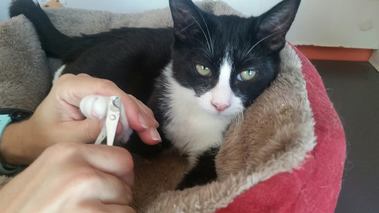 Years ago, declawing a cat may have been considered a routine veterinary procedure but advocacy groups, such as Alley Cat Rescue, have been fighting against this perception and for stronger laws against the practice. Slowly, the tides have been changing as more pet owners learn about the negative welfare implications. Legislative changes against this harmful practice have been even slower but California may become the first state to ban the practice. SB 1441, introduced by Senator Henry Stern and co-authored by Senator Scott Wilk, would prohibit non-therapeutic declawing in cats. This bill would not prohibit the rare times declawing is recommended for medical reasons. First-time offenders would be punished with a fine of up to $250 and second and subsequent violations would be a misdemeanor. While 20 countries and the UK currently ban declawing, it is not banned federally or at the state level in the United States. Cities such as Hollywood, California, Santa Monica, California and Norfolk, Virginia have bans on declawing in place. California and Rhode Island have passed laws that ban landlords from requiring tenants to have their animals declawed or devocalized. ACR hopes SB 1441 will be the first state law against declawing. The declawing procedure is simply amputation: amputation that can lead to lifelong injuries and behavioral issues. The declawing procedure involves removing the first joint of the cat’s toe, equivalent to amputating the first knuckle off a person’s fingers. Cats can suffer from symptoms such as pain in their feet, arthritis and difficulty moving around. Owners may declaw their cats to prevent the cat from scratching but declawing can actually cause more “problem” behaviors. Declawed cats are more likely to go outside of the litter box because the litter can be too painful for their paws and are more likely to bite because they cannot use their claws for protection. Further, scratching is a natural cat behavior that can help them exercise and tone their muscles (click here for more reasons why you should not declaw your cat). Proponents of declawing will claim that the practice keeps cats in homes. US cities that have banned declawing have actually seen a decline in the number of relinquished cats since the ban was enacted. Declawing can bring about problems such as litter-box issues and pain-induced aggression which may make an owner even more likely to relinquish their cat. We thank Senator Henry Stern for being an advocate for animals and introducing this bill. Let’s make California the first state to ban this cruel and outdated practice! If you live in California, please reach out to your representatives and ask them to support a ban on declawing cats. Even if you do not live in California, you can help get this bill passed by signing this petition: https://www.change.org/p/henry-stern-we-support-anti-declaw-legislation-in-california If you live in New York, New Jersey and Hawaii your state is also considering a bill to ban declawing so get on the phone and tell your representatives you support a statewide ban on declawing.
2 Comments
 A Maryland bill that would allow judges to prohibit animal abusers from owning animals is going to Governor Larry Hogan’s desk for signature. An Act Concerning Animal Cruelty- Sentencing Conditions (HB 212/SB 1038) passed the Maryland General Assembly and now just has to be signed by Governor Hogan before it becomes law. This bill allows judges to prohibit a defendant convicted of aggravated animal cruelty from “owning, possessing, or residing with an animal for a specified period of time.” Aggravated animal cruelty includes crimes such as intentionally mutilating, torturing and cruelly beating an animal. These offenders have proven that they cannot humanely interact with animals. Although some animal abusers may be able to rehabilitated, aggravated abusers display a violent personality that can escalate over time. This bill will protect innocent animals from ending up in the hands of these dangerous offenders. So far 26 states and the District of Columbia have laws mandating or allowing judges to ban animal abusers from owning animals. Help Maryland become the next state that passes this law! Contact Governor Hogan here and urge him to sign HB 212/SB 1038 into law. If you do not live in Maryland or would also like to help out animals at the federal level, check out our list of federal bills that will help cats here.  The Western Governors’ Association (WGA) recently released a list of the “Top 50 Invasive Species in the West”. Somehow feral cats were ranked 13th out of the top 25 terrestrial invasive species in the West. WGA specifies that all feral cats, including cats who have been trap-neuter-returned, are included on the list. WGA has been supportive of lethal eradication plans for invasive species and says, “Programs for the control and/or eradication of invasive species must result in more on-the-ground prevention, management and eradication.” Eradication programs continually fail to manage cat overpopulation and inhumanely kill one of our country’s most beloved animals. A study by Faunalytics in 2015 found that 68% of people support TNR for managing community cats while only 24% support eradication. Why is the WGA ignoring the will of the people and scientific studies showing the effectiveness of TNR? ACR has seen firsthand the positive effect TNR can have. Last year, our TNR program and spay/neuter clinic helped reduce cat intake at the Prince George’s County Animal Shelter by 18% and euthanasia rates by 38% in our targeted area. Sign our petition to tell WGA that cats are not an invasive species today: https://www.thepetitionsite.com/takeaction/841/456/513/ If you live in one of these states, click to contact your governor and tell them cats are not an invasive species: 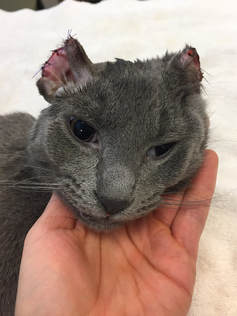 Last week, California State Senator Scott Wilk (R-Antelope Valley) announced the introduction of the Animal Welfare and Violence Intervention Act of 2018 (SB 1024) to address the clear link between animal cruelty and violence against people. This bill aims to end the cycle of violence by mandating all offenders of severe crimes undergo mental health assessments and ongoing counseling, if it is deemed beneficial. It will also require offenders of specified crimes to complete an animal abuse education course. The bill will increase the fines for crimes against animals, helping to offset the costs. SB 1024 will address the root causes of animal cruelty and prevent re-offense, protecting countless animals and people. Animal abuse is an indicator of a violent personality. A 10-year study of at-risk youth found that children who were cruel to animals were more than twice as likely to be referred to authorities for violent offenses. By proactively treating animal abusers we can break the cycle of violence and prevent abusers from escalating in violence. It is incredibly important for our laws to work to end the cycle of violence. SB 1024 will do just this by focusing on treating and rehabilitating animal abusers. Many of these animal abusers are young adults who have grown up in violent households. While animal abusers should be punished, our criminal justice system should also address psychological factors so we can truly prevent animal abusers from re-offending. Alley Cat Rescue saw the cost of animal cruelty firsthand earlier this year when we rescued Hardy, an innocent kitten who had been tortured and mutilated over a course of weeks. Thankfully Hardy survived, but many animals die at the hands of animal abusers. Call your state representative and ask them to co-sponsor and vote for SB 1024. If you do not live in California, call your state representatives and tell them animal cruelty is an important issue you care about. Download our form email here Currie, C. L. (2006). Animal cruelty by children exposed to domestic violence. Child Abuse & Neglect, 30(4), 425–435. Becker, K.D., Herrera, V.M., McCloskey, L.A. & Stuewig, J. (2004). A Study of Firesetting and Animal Cruelty in Children: Family Influences and Adolescent Outcomes, Journal of the American Academy of Child and Adolescent Psychiatry, 43(7). 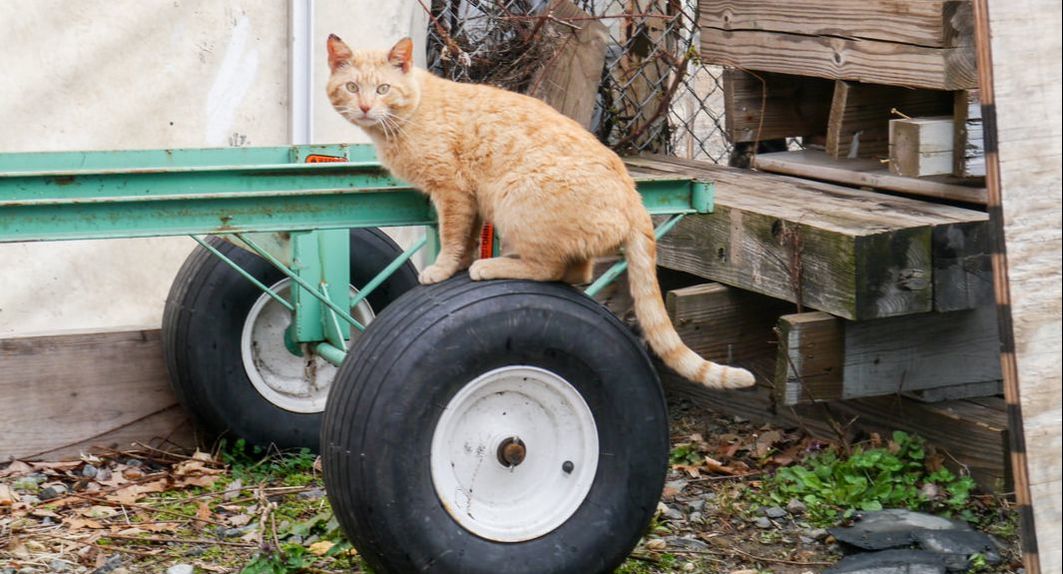 Last week, Alley Cat Rescue received a call from an owner of a local construction company. Both she and her staff had been caring for a colony of cats, but they’d begun to worry about the cats reproducing. What began as just a few cats slowly moving onto the construction site had now become a whole established colony. The employees had fallen in love with the cats and built them multiple shelters. One of the cat houses even has multiple levels and might be nicer than some DC apartments! These workers spend their lunch breaks with the colony, and the cats love to get a bit of shared food. With kitten season fast approaching, the owner knew she had to act. There were multiple females in the colony who were at risk of having kittens. The owner loved the cats but had never done Trap-Neuter-Return (TNR) before, so we decided to head over to the site and do a little teaching so that she and her employees would be trained and empowered to sterilize any new cats that entered the colony. When we arrived at the site, the cats immediately appeared. Although they stayed at a distance, they were used to people being present and didn’t run away from us, even as we set the traps. The construction company’s office cat, Sam, happily followed us around and watched us set up. Sam too would be coming with us to get sterilized, but all we had to do was pick him up and put in him a carrier! Two minutes after we set the first trap, we had already trapped a cat. The owner did a great job at preparing for the rescue and had stopped feeding the cats 12 hours before we arrived. These kitties were hungry and definitely wanted some of the wet food in the traps. An hour later, we had caught all but two cats. These last two cats were masterful at avoiding being trapped. The orange male even ducked his head into the trap and quickly grabbed some wet food before scurrying off! We decided to add more food into the traps, this time a very fragrant salmon wet food and wait out of sight for an hour. Sometimes the commotion of having people around can put the cats on edge, making them less likely to go into the trap. At the end of the day, we finally had all the cats trapped and they were off to our spay/neuter clinic! When we later returned the cats to the construction yard they were happy to be home. Sam, the working cat, was so happy to be back that he leapt from our arms before stopping in his tracks and coming back for more belly rubs. The owner and construction workers are excited to have their colony back! They’re relieved to know there won’t be any new kittens born outside in their colony and are now actively monitoring the colony for any new members in need of TNR. |
Details
AuthorAlley Cat Rescue is leading in the way in promoting humane and compassionate care for ALL cats. Archives
June 2024
Categories
All
|
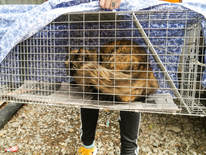
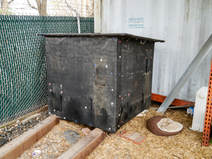
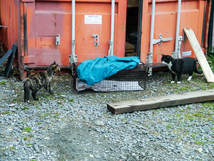
 RSS Feed
RSS Feed